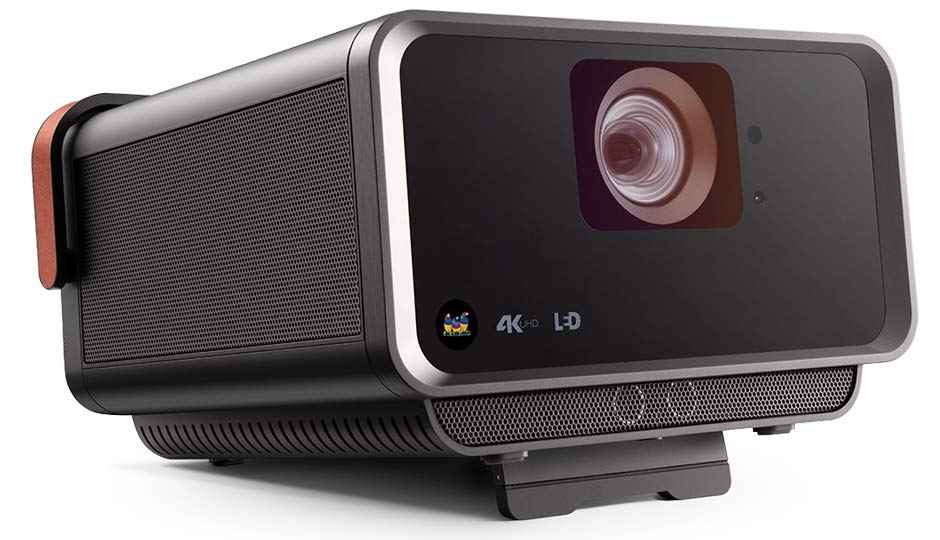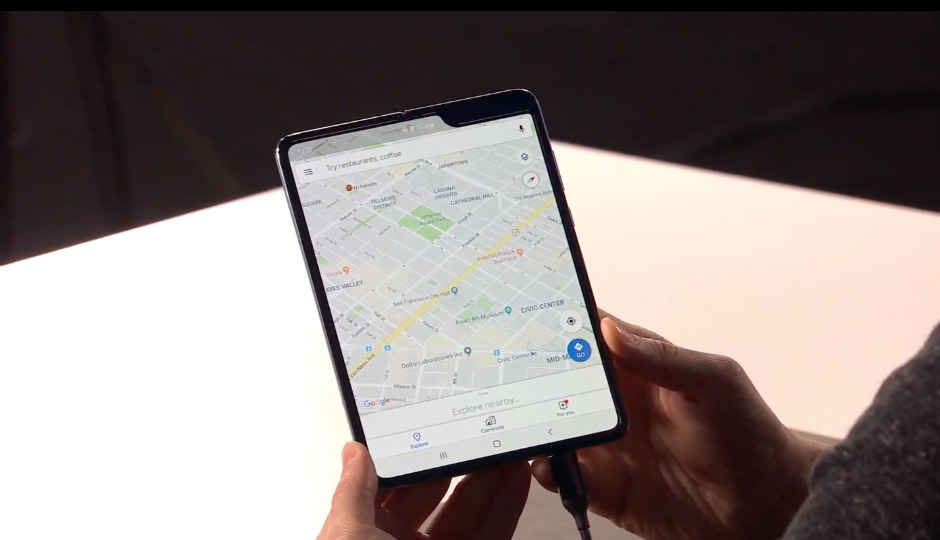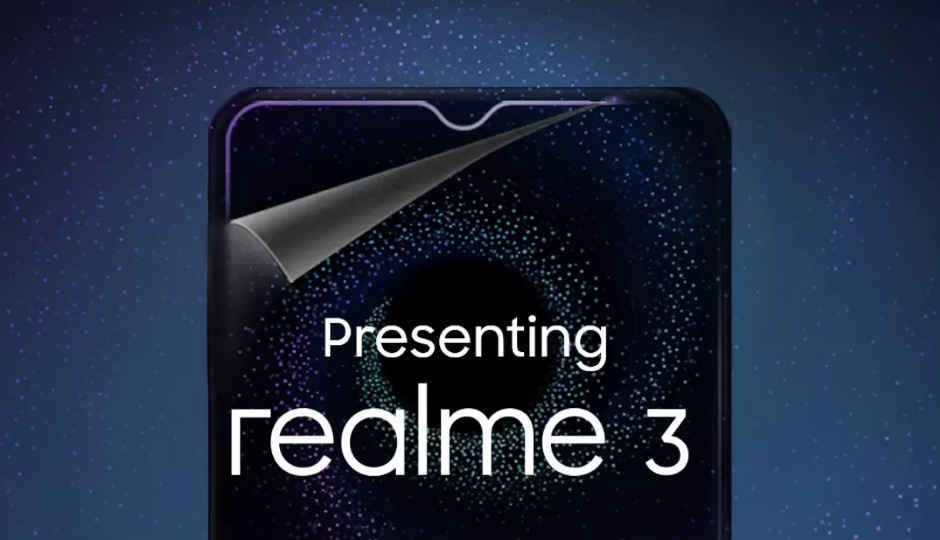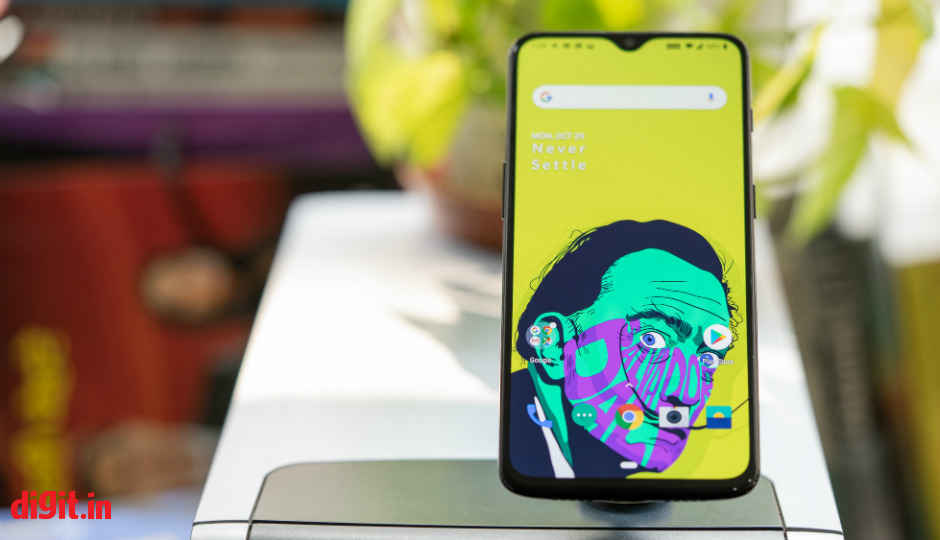 Viewsonic has launched three new projectors in India catering to different types of use cases and customers. The X10-4K LED portable projector was launched at ‘What Hi-Fi Show’ at St. Regis Hotel Lower Parel, Mumbai. The portable projector comes with Amazon Alexa and Google Voice assistants. The X10-4K is an LED-based projector with integrated Harmon Kardon speakers, and built-in smart technologies specifically build to cater as the home entertainment solution. Alongside they also launched the ViewSonic M1+ LED which is an LED-based portable projector specifically built for a budget conscious market and finally a professional phosphor-based projector i.e LS800 HD which is Full HD projector built for professional setups in large venues. X10-4K The Viewsonic X10-4K comes with 4K resolution with smart streaming functionality and portable design. It's lightweight design, easy carry handle, and short throw lens makes it a portable projector perfect for those who want a theatre-like experience at the comfort of their couch. Furthermore, the projector features 2,400 LED lumens of brightness, 125% of Rec.709 colour accuracy and Frame Interpolation technology which the company claims reduce motion blur and ensures fluid multimedia content projection and HDR support. Connectivity options include Wi-Fi connectivity to stream content, HDMI 2.0/HDCP 2.2, USB 2.0 Type-A, Type-C, Audio In/Out, and RJ45. M1+ LED ViewSonic M1+ LED is an ultra-portable projector that provides entertainment and content delivery on a budget. It comes with a built-in battery that provides up to six hours of battery life and Viewsonic claims the projector utilizes the latest solid-state LED technology, making the projector mercury and lamp free and offers up to 30,000 hours of usage. The projector itself weighs less than 2 pounds and offers 300 ANSI lumens of brightness and a 120,000:1 contrast ratio and dual Harman Kardon speakers on-board. M1+ offers connectivity options like Bluetooth wireless connectivity, HDMI, USB 2.0 and USB Type C, Audio Out and a MicroSD card reader. LS800 HD On the other hand, LS800 HD is phosphor based projector designed for a professional setup like education and business application in large venues like lecture halls and large boardrooms and auditoriums. It is a Full HD projector which features a brightness of 5,000 ANSI Lumens, a 100,000:1 contrast ratio and a company claimed 30,000 hours of light source life. Viewsonic says, “Full HD 1080p resolution combined with ViewSonic’s SuperColor™ technology, the LS800HD laser projector deliver advanced colour reproduction, bringing to life captivating colour, crisp graphics, and stunning images.” The X10-4K comes with a price tag of INR 350K while the budget-friendly M1+ LED and LS800 HD are priced at INR 60K and INR 365K respectively.
Viewsonic has launched three new projectors in India catering to different types of use cases and customers. The X10-4K LED portable projector was launched at ‘What Hi-Fi Show’ at St. Regis Hotel Lower Parel, Mumbai. The portable projector comes with Amazon Alexa and Google Voice assistants. The X10-4K is an LED-based projector with integrated Harmon Kardon speakers, and built-in smart technologies specifically build to cater as the home entertainment solution. Alongside they also launched the ViewSonic M1+ LED which is an LED-based portable projector specifically built for a budget conscious market and finally a professional phosphor-based projector i.e LS800 HD which is Full HD projector built for professional setups in large venues. X10-4K The Viewsonic X10-4K comes with 4K resolution with smart streaming functionality and portable design. It's lightweight design, easy carry handle, and short throw lens makes it a portable projector perfect for those who want a theatre-like experience at the comfort of their couch. Furthermore, the projector features 2,400 LED lumens of brightness, 125% of Rec.709 colour accuracy and Frame Interpolation technology which the company claims reduce motion blur and ensures fluid multimedia content projection and HDR support. Connectivity options include Wi-Fi connectivity to stream content, HDMI 2.0/HDCP 2.2, USB 2.0 Type-A, Type-C, Audio In/Out, and RJ45. M1+ LED ViewSonic M1+ LED is an ultra-portable projector that provides entertainment and content delivery on a budget. It comes with a built-in battery that provides up to six hours of battery life and Viewsonic claims the projector utilizes the latest solid-state LED technology, making the projector mercury and lamp free and offers up to 30,000 hours of usage. The projector itself weighs less than 2 pounds and offers 300 ANSI lumens of brightness and a 120,000:1 contrast ratio and dual Harman Kardon speakers on-board. M1+ offers connectivity options like Bluetooth wireless connectivity, HDMI, USB 2.0 and USB Type C, Audio Out and a MicroSD card reader. LS800 HD On the other hand, LS800 HD is phosphor based projector designed for a professional setup like education and business application in large venues like lecture halls and large boardrooms and auditoriums. It is a Full HD projector which features a brightness of 5,000 ANSI Lumens, a 100,000:1 contrast ratio and a company claimed 30,000 hours of light source life. Viewsonic says, “Full HD 1080p resolution combined with ViewSonic’s SuperColor™ technology, the LS800HD laser projector deliver advanced colour reproduction, bringing to life captivating colour, crisp graphics, and stunning images.” The X10-4K comes with a price tag of INR 350K while the budget-friendly M1+ LED and LS800 HD are priced at INR 60K and INR 365K respectively.from Latest Technology News https://ift.tt/2VvhMfO
 Highlights: Richard Yu, the CEO of Huawei’s Mobile business says that Samsung Galaxy Fold’s design is "not good." The company exec is said to have axed a project that was better than Samsung’s Galaxy Fold. The Mobile World Congress 2019 recently concluded but without a doubt, the most attractive devices at the show were foldable phones. Samsung, and Huawei showcased their foldable handsets and we already know that the two devices sport rather unique designs. While the Galaxy Fold features three-screens and opens up like a book, the Huawei Mate X features a single display that when fully stretched, resembles a tablet and wraps around the device’s body to resemble a phone. While the question, which design is better, might be subjective, Richard Yu, the CEO of Huawei’s Mobile business seems to killed a foldable phone project that is said to be same as the Galaxy Fold’s design as it was "not good." "I feel having two screens, a front screen and a back screen, makes the phone too heavy," Richard Yu told Business Insider while talking about the Galaxy Fold. As per the report, Yu said that the company was working on three foldable design projects simultaneously. One of the designs is said to resemble something that is touted to be “even better than” the Samsung Galaxy Fold but was axed by Yu as "It was bad." We can’t really say anything on which phone is better of the two, in terms of design, since both the companies decided to showcase their devices and not experience them. The Samsung Galaxy Fold and the Huawei Mate X were demoed by the company and didn’t allow anyone to touch or experience the phone. However, whichever design one likes, both the devices are priced steeply and are surely a niche for now. The Samsung Galaxy Fold goes on sale on April 26 and will cost $1980 (approx Rs 1,40,619), while the Huawei Mate X is priced at a whopping €2299 (Roughly Rs 1,85,285). LG also showcased its LG V50 ThinQ that, which is not a truly foldable phone but does come with a case that sports a second 6.2-inch OLED display. When attached to the device, it runs on the V50’s 4000mAh battery and can be used as a controller for games or just utilize the extra space for creating better PPTs or for similar use cases. Related Reads: All the foldable smartphones announced so far at MWC 2019
Highlights: Richard Yu, the CEO of Huawei’s Mobile business says that Samsung Galaxy Fold’s design is "not good." The company exec is said to have axed a project that was better than Samsung’s Galaxy Fold. The Mobile World Congress 2019 recently concluded but without a doubt, the most attractive devices at the show were foldable phones. Samsung, and Huawei showcased their foldable handsets and we already know that the two devices sport rather unique designs. While the Galaxy Fold features three-screens and opens up like a book, the Huawei Mate X features a single display that when fully stretched, resembles a tablet and wraps around the device’s body to resemble a phone. While the question, which design is better, might be subjective, Richard Yu, the CEO of Huawei’s Mobile business seems to killed a foldable phone project that is said to be same as the Galaxy Fold’s design as it was "not good." "I feel having two screens, a front screen and a back screen, makes the phone too heavy," Richard Yu told Business Insider while talking about the Galaxy Fold. As per the report, Yu said that the company was working on three foldable design projects simultaneously. One of the designs is said to resemble something that is touted to be “even better than” the Samsung Galaxy Fold but was axed by Yu as "It was bad." We can’t really say anything on which phone is better of the two, in terms of design, since both the companies decided to showcase their devices and not experience them. The Samsung Galaxy Fold and the Huawei Mate X were demoed by the company and didn’t allow anyone to touch or experience the phone. However, whichever design one likes, both the devices are priced steeply and are surely a niche for now. The Samsung Galaxy Fold goes on sale on April 26 and will cost $1980 (approx Rs 1,40,619), while the Huawei Mate X is priced at a whopping €2299 (Roughly Rs 1,85,285). LG also showcased its LG V50 ThinQ that, which is not a truly foldable phone but does come with a case that sports a second 6.2-inch OLED display. When attached to the device, it runs on the V50’s 4000mAh battery and can be used as a controller for games or just utilize the extra space for creating better PPTs or for similar use cases. Related Reads: All the foldable smartphones announced so far at MWC 2019  Highlights: Realme 3 will be powered by the Helio P70 SoC and 4230 mAh battery. These specs of the phone were revealed by Flipkart. The handset is slated to launch on March 4. Realme 3 will be launched on March 4 and the company and its CEO, Madhav Sheth, are leaving no stone unturned to create a hype for the upcoming device. While there are no more online platform exclusives, Flipkart has hosted a dedicated microsite for the upcoming phone, suggesting that it will be available via the online retailer. Additionally, the new webpage reveals some key specifications of the handset ahead of the official launch. Relme seems to have taken a jab at the recently launched Redmi Note 7 Pro and the Redmi Note 7 smartphones, as the Realme 3 is being promoted as being “#3StepsAhead” of the competition. The Flipkart webpage confirms that the Realme 3 will be powered by the MediaTek Helio P70 processor that is built on a 12 nm manufacturing process. The Helio P70 is being compared with a 14nm processor, which seems to be a dig at the 14nm Snapdragon 660 used on the Redmi Note 7. The teaser page also confirms the presence of a dewdrop notch display design on the Realme 3, along with a 4230 mAh battery. The latter is again compared with ‘Smaller batteries,’ which could be a reference to the 4,000mAh battery used on the Redmi Note 7 series. It is also reiterated that the Realme 3 smartphone will be launched at 12:30 PM on March 4. That’s all the official information Realme has revealed about the upcoming Realme 3 smartphone. However, Sheth recently teased that a pro variant of the phone could also be announced alongside the standard variant and going by the teased video, it could come with fast charging support. The phone is also confirmed to feature a dual-rear camera and a rear-mounted fingerprint sensor, along with a diamond-cut design for the rear panel. The competition in the mid-range smartphone segment is heating up. With Xiaomi introducing the Redmi Note 7 series that feature updated specs at a relatively lower price, it remains to be seen how the competing brands like Realme, Asus, and Honor adjust their strategies. Related Reads: Redmi Note 7 Pro with 48MP camera launched in India alongside Redmi Note 7: Price, Specs, and all you need to know
Highlights: Realme 3 will be powered by the Helio P70 SoC and 4230 mAh battery. These specs of the phone were revealed by Flipkart. The handset is slated to launch on March 4. Realme 3 will be launched on March 4 and the company and its CEO, Madhav Sheth, are leaving no stone unturned to create a hype for the upcoming device. While there are no more online platform exclusives, Flipkart has hosted a dedicated microsite for the upcoming phone, suggesting that it will be available via the online retailer. Additionally, the new webpage reveals some key specifications of the handset ahead of the official launch. Relme seems to have taken a jab at the recently launched Redmi Note 7 Pro and the Redmi Note 7 smartphones, as the Realme 3 is being promoted as being “#3StepsAhead” of the competition. The Flipkart webpage confirms that the Realme 3 will be powered by the MediaTek Helio P70 processor that is built on a 12 nm manufacturing process. The Helio P70 is being compared with a 14nm processor, which seems to be a dig at the 14nm Snapdragon 660 used on the Redmi Note 7. The teaser page also confirms the presence of a dewdrop notch display design on the Realme 3, along with a 4230 mAh battery. The latter is again compared with ‘Smaller batteries,’ which could be a reference to the 4,000mAh battery used on the Redmi Note 7 series. It is also reiterated that the Realme 3 smartphone will be launched at 12:30 PM on March 4. That’s all the official information Realme has revealed about the upcoming Realme 3 smartphone. However, Sheth recently teased that a pro variant of the phone could also be announced alongside the standard variant and going by the teased video, it could come with fast charging support. The phone is also confirmed to feature a dual-rear camera and a rear-mounted fingerprint sensor, along with a diamond-cut design for the rear panel. The competition in the mid-range smartphone segment is heating up. With Xiaomi introducing the Redmi Note 7 series that feature updated specs at a relatively lower price, it remains to be seen how the competing brands like Realme, Asus, and Honor adjust their strategies. Related Reads: Redmi Note 7 Pro with 48MP camera launched in India alongside Redmi Note 7: Price, Specs, and all you need to know  Highlights: NASA mimics mixtures found in the primordial Earth ocean It introduces the mixtures in a mini-ocean created within its lab The study is aimed at understanding the formation of life better It’s one thing to perform historical reenactments for education and entertainment but another thing entirely to recreate the birth of life under the ocean from four billion years ago to understand the formation of life better on other planets. But that’s exactly what NASA has gone and done at its Jet Propulsion Laboratory in Pasadena, California. The experiment was conducted by astrobiologist Laurie Barge and her team by creating miniature seafloors inside the lab—“mini-oceans”, in other words. The mini-oceans, filled with mixtures that mimic the Earth’s primordial ocean, allowed the scientists at NASA to recreate hydrothermal vents and the same alkaline nature the Earth’s ocean once had. According to NASA’s news release on the matter, the scientists created mini-oceans within the lab that acted as a nursery for the basic building blocks of life like amino acids and organic compounds, thus building proteins. “Understanding how far you can go with just organics and minerals before you have an actual cell is really important for understanding what types of environments life could emerge from,” commented Barge, the lead author on the study, which was later published in the Proceedings of the National Academy of Sciences journal. “Also, investigating how things like the atmosphere, the ocean and the minerals in the vents all impact this can help you understand how likely this is to have occurred on another planet.” The scientists at NASA believe that if the conditions simulated by them are found on other planets, there’s a higher chance of life being present there. To create the simulation, the scientists tested their mini-oceans in the same temperature found near a hydrothermal vent (around 70 degrees Celsius) without any oxygen in the mixture (because Earth had very little oxygen in the ocean back then). When future Mars missions return samples of the planet’s surface, they could reveal evidence of amino acids formed in the manner simulated. The same could happen when we get our hands on samples of other planets later in the future. Related Read: NASA spacecraft reaches asteroid Bennu, breaks record
Highlights: NASA mimics mixtures found in the primordial Earth ocean It introduces the mixtures in a mini-ocean created within its lab The study is aimed at understanding the formation of life better It’s one thing to perform historical reenactments for education and entertainment but another thing entirely to recreate the birth of life under the ocean from four billion years ago to understand the formation of life better on other planets. But that’s exactly what NASA has gone and done at its Jet Propulsion Laboratory in Pasadena, California. The experiment was conducted by astrobiologist Laurie Barge and her team by creating miniature seafloors inside the lab—“mini-oceans”, in other words. The mini-oceans, filled with mixtures that mimic the Earth’s primordial ocean, allowed the scientists at NASA to recreate hydrothermal vents and the same alkaline nature the Earth’s ocean once had. According to NASA’s news release on the matter, the scientists created mini-oceans within the lab that acted as a nursery for the basic building blocks of life like amino acids and organic compounds, thus building proteins. “Understanding how far you can go with just organics and minerals before you have an actual cell is really important for understanding what types of environments life could emerge from,” commented Barge, the lead author on the study, which was later published in the Proceedings of the National Academy of Sciences journal. “Also, investigating how things like the atmosphere, the ocean and the minerals in the vents all impact this can help you understand how likely this is to have occurred on another planet.” The scientists at NASA believe that if the conditions simulated by them are found on other planets, there’s a higher chance of life being present there. To create the simulation, the scientists tested their mini-oceans in the same temperature found near a hydrothermal vent (around 70 degrees Celsius) without any oxygen in the mixture (because Earth had very little oxygen in the ocean back then). When future Mars missions return samples of the planet’s surface, they could reveal evidence of amino acids formed in the manner simulated. The same could happen when we get our hands on samples of other planets later in the future. Related Read: NASA spacecraft reaches asteroid Bennu, breaks record Highlights: OxygenOS Open Beta build rolling out to OnePlus 6, 6T, 5 and 5T. The update doesn't introduce new features. Bug fixes include fixing lag while setting alarms, video calling stability and more. The OnePlus 6 and the OnePlus 6T are now receiving a new Open Beta build that, while not introducing any new vital changes, introduces some important bug fixes. The smartphones launched in 2018 are now running on Android 9 Pie and are on their 13th and 5th versions of OxygenOS respectively. Earlier, the OnePlus 5 and the OnePlus 5T also received an OxygenOS Open Beta update to version 27. The updates offer a variety of bug fixes. They include fixing the lag that would be experienced by a few users when setting an alarm using the clock app. The update also improves stability for video calls. Previously, OnePlus had also allowed the option for Quick Reply in landscape mode along with an optimised screenshot function. The gaming mode was enhanced along with the clock app. The users who have enrolled for the OxygenOS Open Beta program will get the new update via OTA in the next few days. Furthermore, the company also recently announced it would be holding 5G trials in India in partnership with Qualcomm. The company even showcased its 5G prototype at MWC 2019, which was powered by the Snnapdragon 855 along with the Snapdragon X50 5G modem. At the tradeshow, OnePlus also said the upcoming OnePlus flagship would not have 5G. The 5G variant will launch as a separate lineup in select markets. Later, Pete Lau also confirmed that the next OnePlus flagship would not have wireless charging. Some of the leaked renders also point to a bezel-less OnePlus flagship with a mechanical pop-up module housing the front camera. It’s still not confirmed however, and remains to be seen what OnePlus has in store for us this year. Related Reads: Upcoming OnePlus flagship won't feature wireless charging, confirms Pete Lau OnePlus 5G prototype showcased at MWC 2019
Highlights: OxygenOS Open Beta build rolling out to OnePlus 6, 6T, 5 and 5T. The update doesn't introduce new features. Bug fixes include fixing lag while setting alarms, video calling stability and more. The OnePlus 6 and the OnePlus 6T are now receiving a new Open Beta build that, while not introducing any new vital changes, introduces some important bug fixes. The smartphones launched in 2018 are now running on Android 9 Pie and are on their 13th and 5th versions of OxygenOS respectively. Earlier, the OnePlus 5 and the OnePlus 5T also received an OxygenOS Open Beta update to version 27. The updates offer a variety of bug fixes. They include fixing the lag that would be experienced by a few users when setting an alarm using the clock app. The update also improves stability for video calls. Previously, OnePlus had also allowed the option for Quick Reply in landscape mode along with an optimised screenshot function. The gaming mode was enhanced along with the clock app. The users who have enrolled for the OxygenOS Open Beta program will get the new update via OTA in the next few days. Furthermore, the company also recently announced it would be holding 5G trials in India in partnership with Qualcomm. The company even showcased its 5G prototype at MWC 2019, which was powered by the Snnapdragon 855 along with the Snapdragon X50 5G modem. At the tradeshow, OnePlus also said the upcoming OnePlus flagship would not have 5G. The 5G variant will launch as a separate lineup in select markets. Later, Pete Lau also confirmed that the next OnePlus flagship would not have wireless charging. Some of the leaked renders also point to a bezel-less OnePlus flagship with a mechanical pop-up module housing the front camera. It’s still not confirmed however, and remains to be seen what OnePlus has in store for us this year. Related Reads: Upcoming OnePlus flagship won't feature wireless charging, confirms Pete Lau OnePlus 5G prototype showcased at MWC 2019 Highlights: Xiaomi-backed gaming smartphone maker Black Shark sets up headquarters in India. The company could soon commence selling its handsets in the country. Smartphone gaming has expanded exponentially in India with games like PUBG Mobile keeping most young Indians engaged for hours. On the heels of such popular games, smartphone brands have also launched a variety of gaming-centric devices to make the most of the emerging trend. We saw Honor announce the Honor Play last year while Asus arrived with the geeked out ROG Phone. Now, Xiaomi-backed gaming smartphone maker Black Shark might soon commence selling its phones in the country. According to a report by Gadgets360, Black Shark has set up headquarters in Bengaluru. The company’s VP David Li will look after India operations while Chirag Nagendra, who was the formerly with OnePlus in the communications team has joined as Black Shark’s Marketing head. The company also announced its India presence formally and it seems to be in the process of setting up things in India. There will be an official launch date of the brand announced later. The company is known for the first Black Shark smartphone, which is Xiaomi’s gaming smartphone rival to the Razer Phone. However, it saw a limited release in just 23 countries. The Black Shark phone was notable not only for the flagship hardware and the gamer-centric design, but also for the additional controller it comes with, that are touted to make gaming much more enjoyable. The device is powered by the Snapdragon 845 SoC and comes with 8GB RAM and 128GB of storage, along with a 5.99-inch display. It also features a liquid-cooling system inside. The company followed it up with the Black Shark Helo later in 2018. The phone has a slightly larger 6.01-inch panel and comes with 10GB of RAM and 256GB storage. Both phones have detachable controllers for gaming. Recently, Xiaomi Product Director Wang Teng Thomas also confirmed on Weibo that a Black Shark 2 is in the works and will reportedly be powered by the Snapdragon 855 flagship processor along with 8GB of RAM. India is an important market for Xiaomi with sub-brands like Redmi and Poco proving to be quite popular, especially the aggressive pricing for the hardware its phones offer. Hopefully, Black Shark will maintain that trend and who knows, maybe undercut other gaming phones in the market like the Nubia Red Magic and the ROG Phone. Related Reads: Xiaomi Black Shark First Impressions: Gamer swag!
Highlights: Xiaomi-backed gaming smartphone maker Black Shark sets up headquarters in India. The company could soon commence selling its handsets in the country. Smartphone gaming has expanded exponentially in India with games like PUBG Mobile keeping most young Indians engaged for hours. On the heels of such popular games, smartphone brands have also launched a variety of gaming-centric devices to make the most of the emerging trend. We saw Honor announce the Honor Play last year while Asus arrived with the geeked out ROG Phone. Now, Xiaomi-backed gaming smartphone maker Black Shark might soon commence selling its phones in the country. According to a report by Gadgets360, Black Shark has set up headquarters in Bengaluru. The company’s VP David Li will look after India operations while Chirag Nagendra, who was the formerly with OnePlus in the communications team has joined as Black Shark’s Marketing head. The company also announced its India presence formally and it seems to be in the process of setting up things in India. There will be an official launch date of the brand announced later. The company is known for the first Black Shark smartphone, which is Xiaomi’s gaming smartphone rival to the Razer Phone. However, it saw a limited release in just 23 countries. The Black Shark phone was notable not only for the flagship hardware and the gamer-centric design, but also for the additional controller it comes with, that are touted to make gaming much more enjoyable. The device is powered by the Snapdragon 845 SoC and comes with 8GB RAM and 128GB of storage, along with a 5.99-inch display. It also features a liquid-cooling system inside. The company followed it up with the Black Shark Helo later in 2018. The phone has a slightly larger 6.01-inch panel and comes with 10GB of RAM and 256GB storage. Both phones have detachable controllers for gaming. Recently, Xiaomi Product Director Wang Teng Thomas also confirmed on Weibo that a Black Shark 2 is in the works and will reportedly be powered by the Snapdragon 855 flagship processor along with 8GB of RAM. India is an important market for Xiaomi with sub-brands like Redmi and Poco proving to be quite popular, especially the aggressive pricing for the hardware its phones offer. Hopefully, Black Shark will maintain that trend and who knows, maybe undercut other gaming phones in the market like the Nubia Red Magic and the ROG Phone. Related Reads: Xiaomi Black Shark First Impressions: Gamer swag!